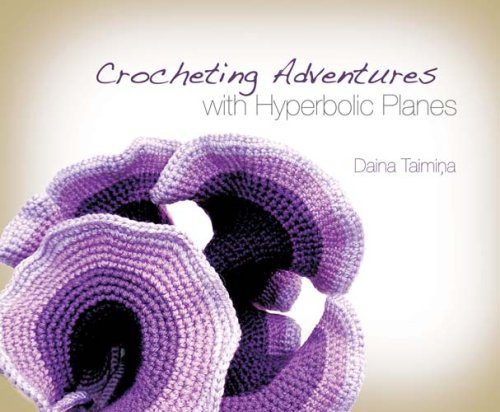I've been collaborating with +Henry Segerman to create some physical models of hyperbolic honeycombs, and here is one of the first we made, the {5,3,4}. If you would like to order one of these for yourself, information is at the bottom of this post.
What is a honeycomb?
It is when you take a bunch of polyhedra and pack them together with no gaps. The polyhedra in a honeycomb are called "cells". This particular honeycomb is a perfectly regular repeating pattern of dodecahedra, four surrounding each edge. For this reason, it is also called the Order-4 Dodecahedral Honeycomb.
Why is it hyperbolic?
Hyperbolic geometry is a space where the angles of a triangle add up to less than 180 degrees. The other kinds of geometries are Euclidean (angles add to 180 degrees) and spherical (angles add to more than 180 degrees). If you try to pack four dodecahedra around an edge in Euclidean or spherical space, they don't fit because angles are too big. But in hyperbolic geometry, you can make them fit.
Hyperbolic space can't fit into our normal Euclidean space, so this is a model of hyperbolic space called the Poincaré Ball model. The infinity of hyperbolic space is compressed to the size of a ball, and as you might imagine, that results in some distortion. Dodecahedra appear smaller and smaller as they approach the spherical surface of the ball, but the dodecahedra are all identical in hyperbolic space. Although visually warped, the ball model preserves all angles: it is "conformal".
Our prints render edges of the honeycomb, and we've scaled them accurately (verses making them constant width). For this reason, the edges appear thinner towards the ball surface. The edge shrinking dictates how much of the honeycomb we can include, because as you add more layers of cells, edges eventually become so thin that a printed model would be too fragile.
Our prints render edges of the honeycomb, and we've scaled them accurately (verses making them constant width). For this reason, the edges appear thinner towards the ball surface. The edge shrinking dictates how much of the honeycomb we can include, because as you add more layers of cells, edges eventually become so thin that a printed model would be too fragile.
What does the cryptic "{5,3,4}" mean?
That is something called the Schläfli symbol, and it is wonderfully descriptive (and recursive!). We can start at the left and work our way to the right to understand the meaning and build up a honeycomb. The Schläfli symbol for a pentagon is {5} because it has 5 sides. The symbol for a dodecahedron is {5,3}, which means that 3 pentagons meet at every vertex. So the first number specifies a particular polygon and the second number describes how to connect up those polygons around a vertex.
The third number continues the trend. It describes how to connect up cells specified by the first two numbers. So the 4 at the end of {5,3,4} means that four dodecahedra surround each edge. Each time we add a number to a Schläfli symbol, we end up describing an object of one higher dimension: first polygons, then polyehedra, then polytopes...
Something else is hidden in the Schläfli symbol of our honeycomb: the last two numbers taken together have meaning. For the {5,3,4}, we're talking about {3,4}. Remember {3} represents a triangle, and {3,4} means that four triangles meet at every vertex. This is the octahedron.
How is the octahedron is meaningful for this honeycomb? It is the the vertex figure, which describes the geometry of how dodecahedra meet at each vertex in the honeycomb. Eight dodecahedra meet at every vertex, one for each face of the octahedron.
What a crazy amount of information compressed into three numbers!
There are four regular honeycombs in hyperbolic space (and eleven more if you loosen the definition a little). Each of these has a unique Schläfli symbol, and so the symbol is a great way to quickly understand how a particular honeycomb is built up. The symbols also work for honeycombs in Euclidean and spherical space.
Now let's check out the {4,3,5}
Can you break down the symbol to understand how this one is built up? What polygon lives throughout? What are the polyhedral cells? How many cells fit around an edge? What is the vertex figure?
The {4,3,5} is the "dual" of the {5,3,4}, so locations of all the element types are exchanged. Where there are cells, polygons, edges, and vertices in one, you respectively have vertices, edges, polygons, and cells in the other. And maybe you just noticed something else about the Schläfli symbol... dual objects have reversed symbols. Self-dual objects have palindromic Schläfli symbols!
You can order your own prints of both these models (and more exotic honeycombs) at my shapeways shop.
If you'd like to dig more, see Coxeter's paper, "Regular Honeycombs in Hyperbolic Space", available in Chapter 10 of the book "The Beauty of Geometry" or online here.

























